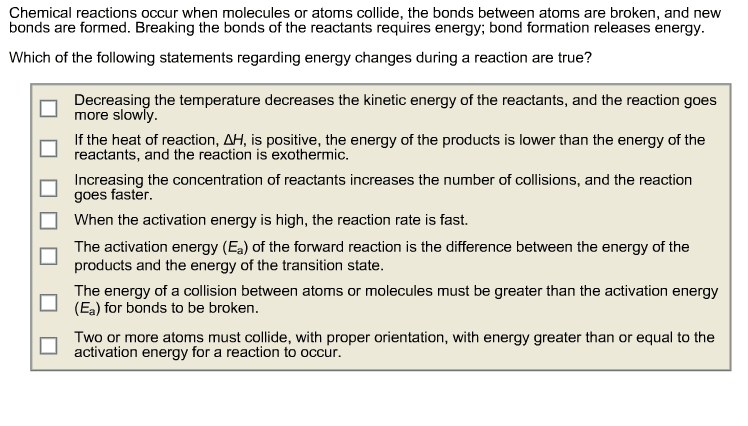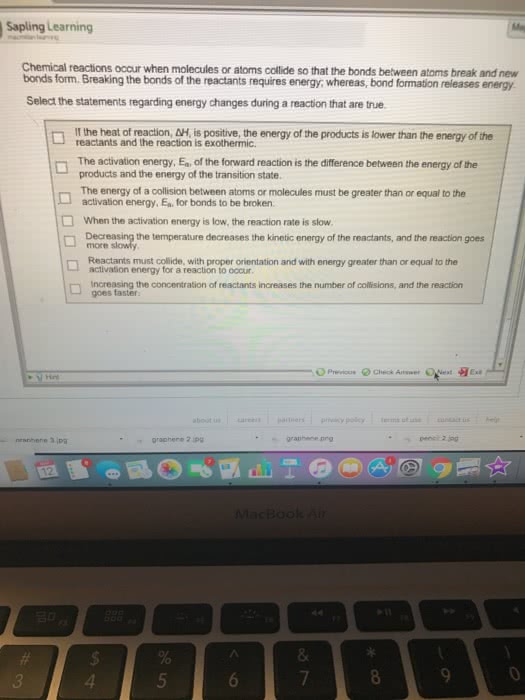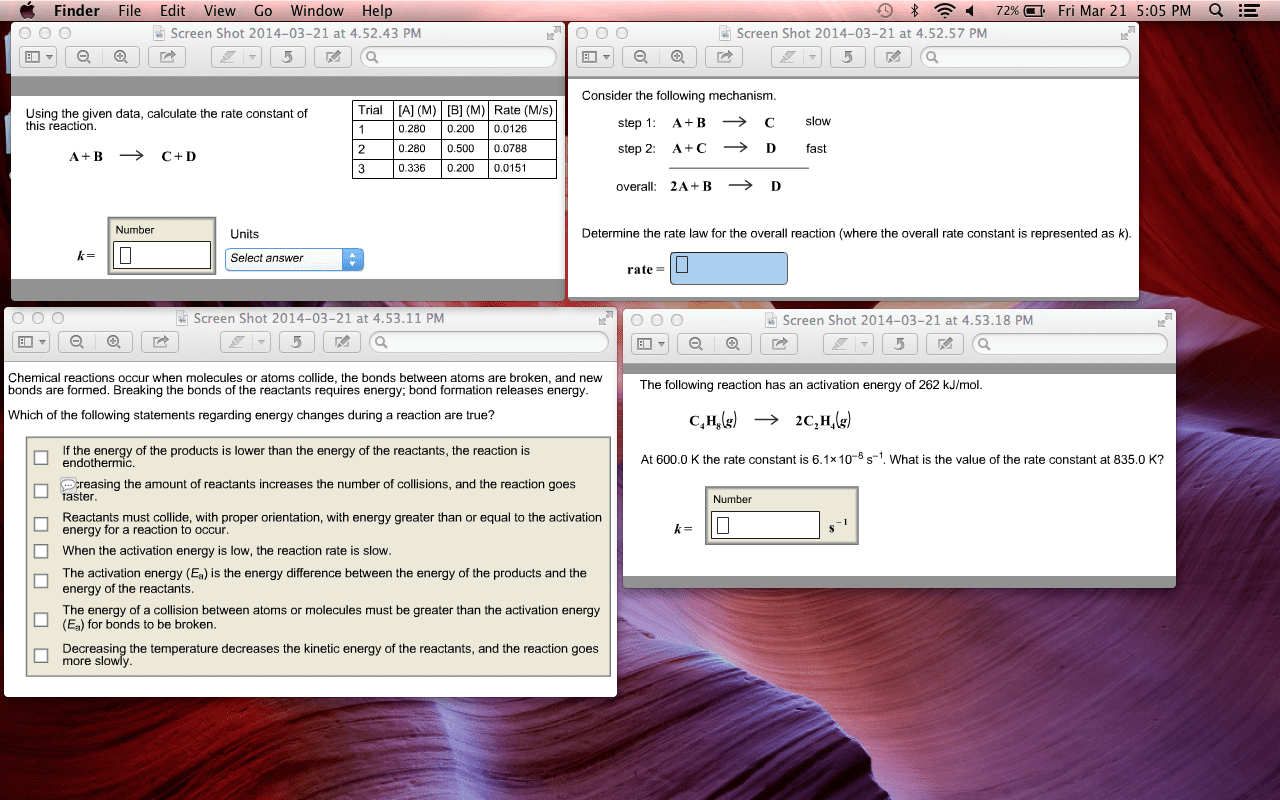CHEM 1210 Lecture Notes - Lecture 7: Activation Energy, Reaction Rate, Covalent Bond
Document Summary
Consider the reaction of h2 and n2 to form ammonia: In this reaction, six covalent bonds are broken and six new ones formed. In this calculation, the triple bond is counted as three bonds. Breaking a bond requires energy, and forming a bond. In this reaction, the energy released in making the six new bonds is greater than the energy required to break the six original bonds. Transition state: a maximum on an energy diagram. In general, reactions between ions in aqueous solution are very. In general, reaction between covalent compounds, whether in water or another solvent, are slower (their activation energies are higher). In most cases, the reaction rate increases when the concentration of either or both reactants increases. For many reactions, there is a direct relationship between concentration and reaction rate. In virtually all reactions, rate increases as temperature increases (directly proportional)




